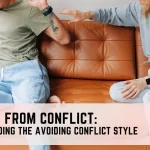
By Jasper Ozbirn
Everybody wants to be a hero. Joseph Campbell’s seminal work The Hero with a Thousand Faces concluded many if not most cultures’ traditional stories, fairytales, and myths embody an element of “hero.” Campbell found these stories often follow a similar plot—the hero’s journey—where the hero arises from his or her mundane surroundings to experience something extraordinary before returning to their initial surroundings transformed in some way.
Outside the realm of story and fairytale, it is interesting to observe that people typically consider themselves the “hero” of the story they tell. This is what makes Hollywood so effective—everyone identifies with the hero. (As proof, ask yourself when the last time was you watched a movie and identified with the villain?) This desire to be the hero is expressed every day, and is easy to notice even in cell phone conversations at the market or mall. People complain about all the wrong another has done them, and elaborate on their many attempts to persevere. In short, they see themselves as the hero, challenged and tested by some villain.
The framework of the hero’s story, and our general desire to be the hero, is readily applicable to mediations of nearly any kind. Let us take a garden-variety family law issue— divorce—as an example. The basic story in many divorces is that the other side has done something wrong or failed to do something right, which has caused the relationship to fail. The mediator should expect that each side will attribute fault to the other and consider themselves the hero. Notably, this phenomenon that we tend to attribute our successes to our own hard work and our failures to some outside source is recognized in Psychology and known as “fundamental attribution error.” Quite simply, both sides believe they are right and the other is wrong.
Now, imagine these two individuals across from each other at a conference table. This, to me, conjures the tensest scene from any myth or fairytale where, at the pinnacle of the story, the hero meets the ultimate challenge—to overcome the dark side. At this point, the hero has only one choice—to prevail or to be prevailed upon. What is the likelihood the villain and hero are going to brew coffee and try to talk through their differences to reach a sensible written agreement in this context?
Why is this? Why doesn’t the villain just give up? I mean, after all, he should recognize it is he the villain that is to be prevailed upon! Unlike plays and fairytales, in real life there are two hero stories: one for each side. This creates an absolute conflict; neither party is going to simply cede and let the other be the hero because to do so would ruin their hero story and their perception of themselves.
This is where mediation provides the key to resolution— it permits each side’s hero story to play out as the party wishes, or at least within bounds that are acceptable. By separating the parties, the mediator allows each individual the opportunity to tell their particular “hero story.” Without the presence of the other party, the mediator is free to acknowledge without appearing partial all the first party has done, the strife they have overcome, and how the other side has done nothing but try to foil those efforts. The mediator can allow this party to explain his or her heroic acts and acknowledge them as the hero they present themselves to be.
Not surprisingly, when the mediator goes into the other caucus room, he or she can expect to again be bombarded with a story of heroism. Just as in the first room, the mediator can acknowledge this party, who was the villain in the first story, to be the hero in the second version of the story. There is little need to contradict, or to present the details of the first party’s story. Contradicting either party, or challenging either’s hero story, is likely to cause the challenged party to try harder to convince the mediator. Being stuck on the “who did what to whom” part of the parties’ stories, and allowing them to bicker over who is the hero, detracts from pursuing resolution.
Thus, one of the great powers of mediation is that the mediator has the luxury of being able to accept all versions of the story as true and acknowledge each side’s heroic efforts. By accepting, instead of contradicting, each side’s hero story, the mediator enables a transition to meaningful discussions of how to return each hero to their mundane worlds, transformed by their hero’s journey.
Must-read Articles:
- Understanding the Stages of Conflict: A Guide - July 23, 2024
- What Is Dehumanization? An In-Depth Overview - July 12, 2024
- Can Text Messages be Used in Court? A Close Look - July 11, 2024


